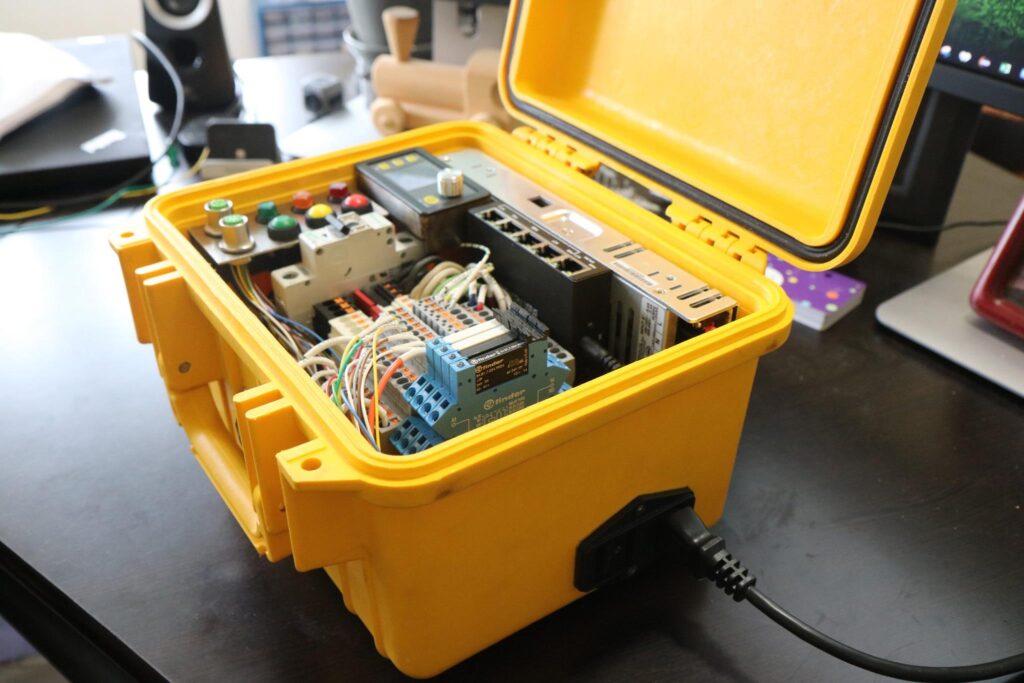24V Industrial Test Box
A portable industrial test box to power cameras, lights, encoders, and other various sensors.

Back in 2018, I started working in the automation industry. I first began as a Field Engineer at a machine vision company in Salisbury, NC. At first, my role in the company was to travel to different customer sites and install full machines and/or integrate vision hardware on existing machines, then ensure the vision inspections were working properly. I was quick to learn how to program smart cameras like those offered by Cognex and Keyence and started writing my own inspections.
When I wasn’t at customer sites, I would be imaging parts for new projects and helping out the shop build machines. Having to set up different cameras, lighting, encoders, trigger inputs, etc., I found it a bit of an inconvenience having to always set up in our lab—especially if testing needed to be done on a machine that still lacked 24VDC power. I also found it frustrating when going on site to test equipment but not having the ability to test different trigger sensors or have 24VDC terminal blocks to utilize close to the equipment that I was testing. After dealing with these frustrations for a few months, I decided to design and build a portable test box that I could use to power cameras, lights, encoders, and other various sensors.
First and foremost, the test box absolutely needed to be portable so that it could be powered by any AC outlet. Secondly, the design needed to include a standard 24VDC power supply as well as a variable voltage DC supply incase I needed to interact with devices that didn’t operate on 24V. Next, I wanted to incorporate standard terminal blocks so that I could easily connect and disconnect equipment at will. Some nice-to-haves would be push buttons, LEDs, relays and a network switch.
The final design ended up with the following:
- 14.6A 24VDC power supply with selectable 120/240VAC input
- 0-50VDC 5A buck-boost converter with LED display and CV/CC modes
- Standard C13 AC input bulkhead with built-in fuse
- Main DC circuit breaker
- 10 3-tier terminal blocks
- AC distribution terminal blocks
- 2 mechanical relay modules
- 2 solid-state relay modules
- Gigabit PoE switch
- 3 push buttons
- 3 LEDs
- 5-pin M12 bulkhead connector
- 8-pin M12 bulkhead connector
- AC outlet with USB ports